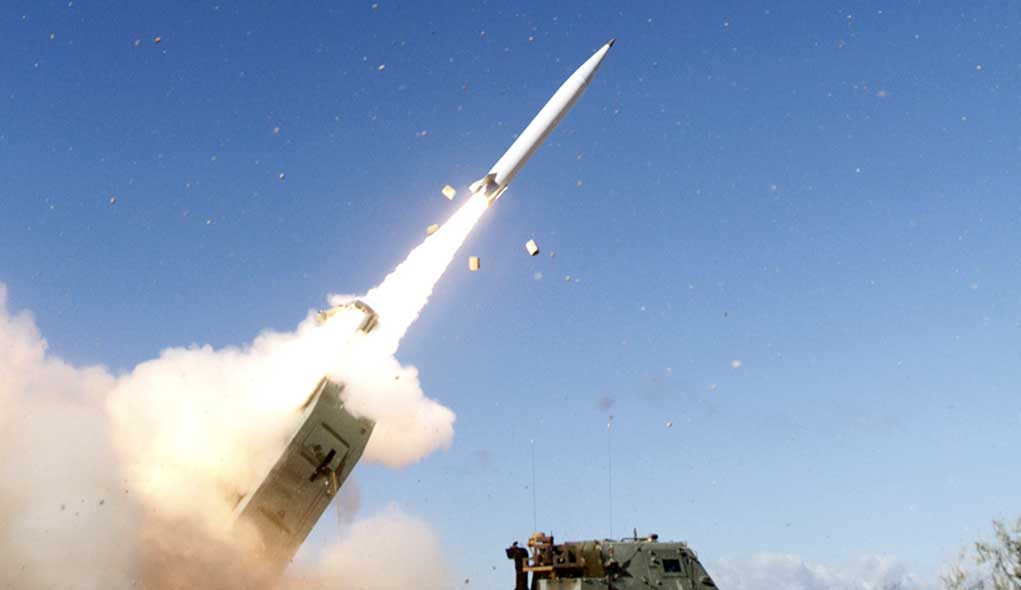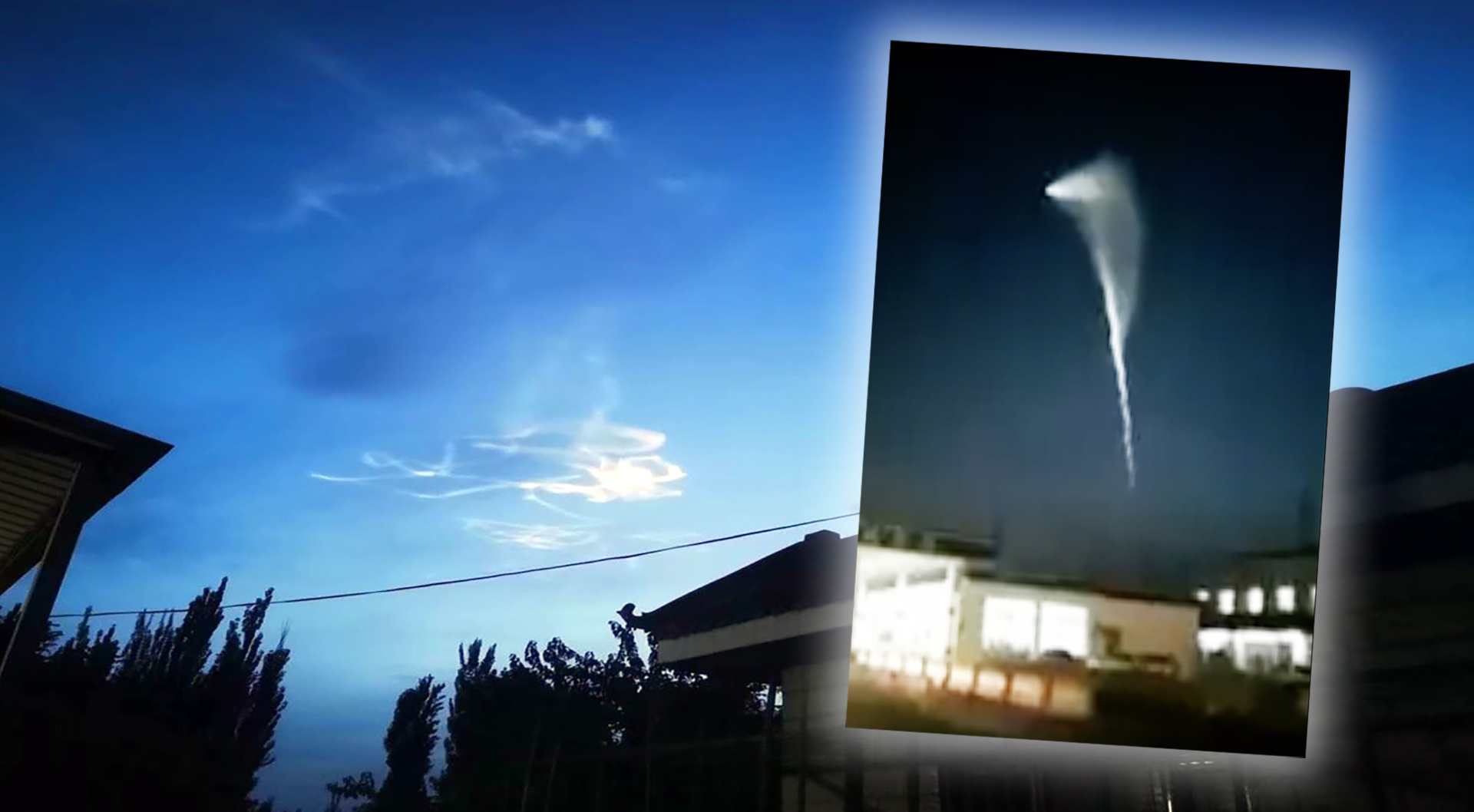China’s Ministry of National Defense announced that a land-based, midcourse, anti-ballistic missile defense test had been carried out over the weekend. The test marks China’s fifth midcourse anti-ballistic missile test to be announced by the Chinese government over the course of 12 years.
Based on warnings put out prior to the test, it is thought that a ballistic missile (or surrogate) was fired from Taiyuan Space Center in Shanxi, China and that an interceptor missile was then fired from Korla, Xinjiang. The test is said to have been completed at night from within China’s borders, and officials are insisting that it was solely intended for defensive purposes and not be aimed at any specific country. They also claim it was successful. The parameters surrounding the test generally line up with the Chinese anti-ballistic missile test conducted last year that you can read more about here.
It is worth noting that this is the first time China has conducted midcourse intercept tests two years back to back. The Chinese government has previously announced five other live interception missile defense tests, occurring in 2010, 2013, 2014, 2018, and 2021. With the exception of the 2014 test, all of these were stated to have involved midcourse interceptions. The midcourse portion of a ballistic missile’s flight is the second in a set of three general phases, with the first being the boost phase and the last being the terminal phase.
In the initial boost phase, a ballistic missile’s rocket booster provides the power that the missile needs to be launched on its targeted trajectory. This is considered to be the optimal point in the missile’s flight profile for an interception to occur, as it is moving slowly with a bright IR signature, and thus is at its most vulnerable. In reality, this just isn’t the case.
While attacking a ballistic missile in the boost phase would be an ideal solution for ballistic missile defense, it only offers a short period for a counter operation to engage it. Not only that, but the intercept capability would need to be close enough to engage the missile and even run it down after lifts off, which is likely to be deep inside enemy territory and the location may not be known before the launch occurs. This distance also limits the application of directed energy weapons, as well. If this window of time is missed, any action after to be taken would have to be carried out during the midcourse or the terminal phases.
The midcourse phase, which was the focus of both this year’s and last year’s anti-ballistic missile tests in China, offers the largest opportunity for an incoming ballistic missile to be intercepted. In terms of air time, the midcourse window is certainly the longest, but it is still extremely challenging for anti-ballistic missile operations due to the altitude of the intercept and potential issues in tracking and targeting the right components of the missile — the part that carries its warheads. Although the greater amount of time presented by the midcourse phase can allow for multiple interceptors to be launched, which could offer defending nations the chance to fire follow-up interceptors at a delay pending the success of the previous launches, the exoatmospheric environment of these intercepts and the speeds involved are extremely challenging to master.
More time in the air also provides the attacking ballistic missile with the opportunity to employ its own set of countermeasures for the defending system to overcome. This is where target discrimination is so critical and that is very hard to do, potentially relying on many powerful offboard sensors as well as those on board the interceptor’s kill vehicle. The networking involved to pull this off can also be extremely complex. As the intricacy of the threat grows, with more advanced countermeasures and higher speeds, the harder it is to accomplish a successful intercept.
The vector of the attack can also be an issue. For instance, attacking from the South Pole, away from where early warning and tracking systems are looking, including those used for target discrimination, can drastically complicate or invalidate a midcourse intercept of an advanced ICBM. Regardless, here is a good explainer on midcourse intercept from a few years back if you want to learn more about it.
The short terminal phase of a ballistic missile system’s flight is the last chance at stopping an incoming strike before detonation or impact. Here, defending systems must be near the impending missile’s target for any countering operations to prove successful because of the extremely limited window of time offered during the missile’s final flight phase, as its reentry vehicles careen towards their targets.
In terms of the specific technologies or midcourse ballistic missile intercept capabilities being tested by China to counter ballistic missile threats, few details have been provided. According to a report on Chinese military capabilities published by the Pentagon in 2021, the People’s Republic of China is currently “developing its indigenous CH-AB-X-02 (HQ-19), which will likely have a ballistic missile defense capability. China is also developing kinetic-kill vehicle technology to field a midcourse interceptor, which will form the upper layer of a multi-tiered missile defense.” Such a vehicle would have been used in this test.
The War Zone tapped the 2020 Pentagon report on Chinese military capabilities following last year’s midcourse anti-ballistic missile test and gathered what is essentially the same information. We also noted that very little about a kinetic-kill interceptor’s design separates it from an anti-satellite weapon, which would line up with China’s ongoing development of its Dong Neng series of anti-satellite interceptors.
The indigenous CH-AB-X-02 (HQ-19) surface-to-air missile capability was also listed to be among China’s anti-ballistic missile defense capabilities in both the Pentagon’s 2020 and 2021 reports. In addition to the unnamed kinetic-kill weapon and the Dong Neng series of anti-satellite interceptors, the HQ-19 is said to be designed with an intercept range that could extend into space, as well. However, the ‘X’ in the Pentagon’s designation for the system implies that the CH-AB-X-02 is still in an experimental phase and has yet to be fielded. the HQ-19 is more akin to the U.S.-made Terminal High Altitude Area Defense (THAAD) system, which is focused more on terminal ballistic missile defense. There are other Chinese systems that remain in an experimental stage, including the so-called ‘HQ-26,’ which is thought to focus on midcourse intercepts similar to the American SM-3 family of missiles.
Despite not yet having a clear picture of all the details, China is clearly continuing to push ahead with its midcourse anti-ballistic missile capability, which could have a secondary anti-satellite role. At the same time, the tests, at least those that have been announced, have been fairly far and few between, indicating a moderate pace of development, not a highly accelerated one. China doesn’t really have a threat from rogue states for which an anti-ballistic missile capability would be needed in a strategic sense. No foreseeable capability would be able to stop a nuclear-armed ballistic missile onslaught from the U.S. military, or even put a major dent in it. Even India could overwhelm such a system.
At the same time, countering conventionally-armed ballistic missiles with shorter ranges during the midcourse phase of flight could be of greater interest, especially in the naval realm. Also, ballistic missiles are proliferating and becoming quite popular once again. The U.S. military will be deploying the SM-6 in both anti-ship and land-attack roles for short-to-medium range strikes from ships and land-based platforms and the U.S. Army is in the process of acquiring new ground-launched Precision Strike Missile ballistic missiles. The Pentagon has programs exploring other longer-range land-based ballistic missiles, too.

Much of this development work has been enabled by the collapse of the Intermediate-Range Nuclear Forces Treaty, or INF, with Russia in 2019. Since then, there has been much talk in American defense and national security circles about potentially deploying weapons that had previously been prohibited under that agreement in the Pacific region.
China may also have an eye out for the possibility of new threats emerging from other countries in Asia. Last year, the U.S. and South Korean authorities agreed to end decades-old limits on ballistic missile development imposed on the latter country. South Korea, which is already in the process of developing new land-based and submarine-launched short-range ballistic missiles, is now free to work on even more advanced designs without any restrictions on maximum range or warhead size, although they do not have a nuclear capability.
China’s ability to swat any of these threats down earlier in their flight would put less pressure on terminal intercept capabilities for key high-risk areas, or naval groups if anti-ship ballistic missiles were put into play. There is also the fact that these systems and concepts provide stepping stones to developing systems that can defend against hypersonic weapons. In some cases, one system could potentially engage both threats, albeit to a limited degree. Hypersonic weapons are an emerging threat that China surely is focusing on countering, just as the U.S. is.
With all of this in mind, it’s clear that China is sending a message that it is indeed in the anti-ballistic missile midcourse intercept game. They are displaying that they have capabilities they are developing and they are technologically capable of pulling off such a high-tech feat, or are at least working hard at achieving that reality. One day, they could potentially operationalize it on a significant scale, but for the foreseeable future, it seems like a relatively steady path to better understanding and mastering the vast array of technologies behind midcourse intercept abilities has been chosen as the logical course.
Contact the author: Emma@thewarzone.com
